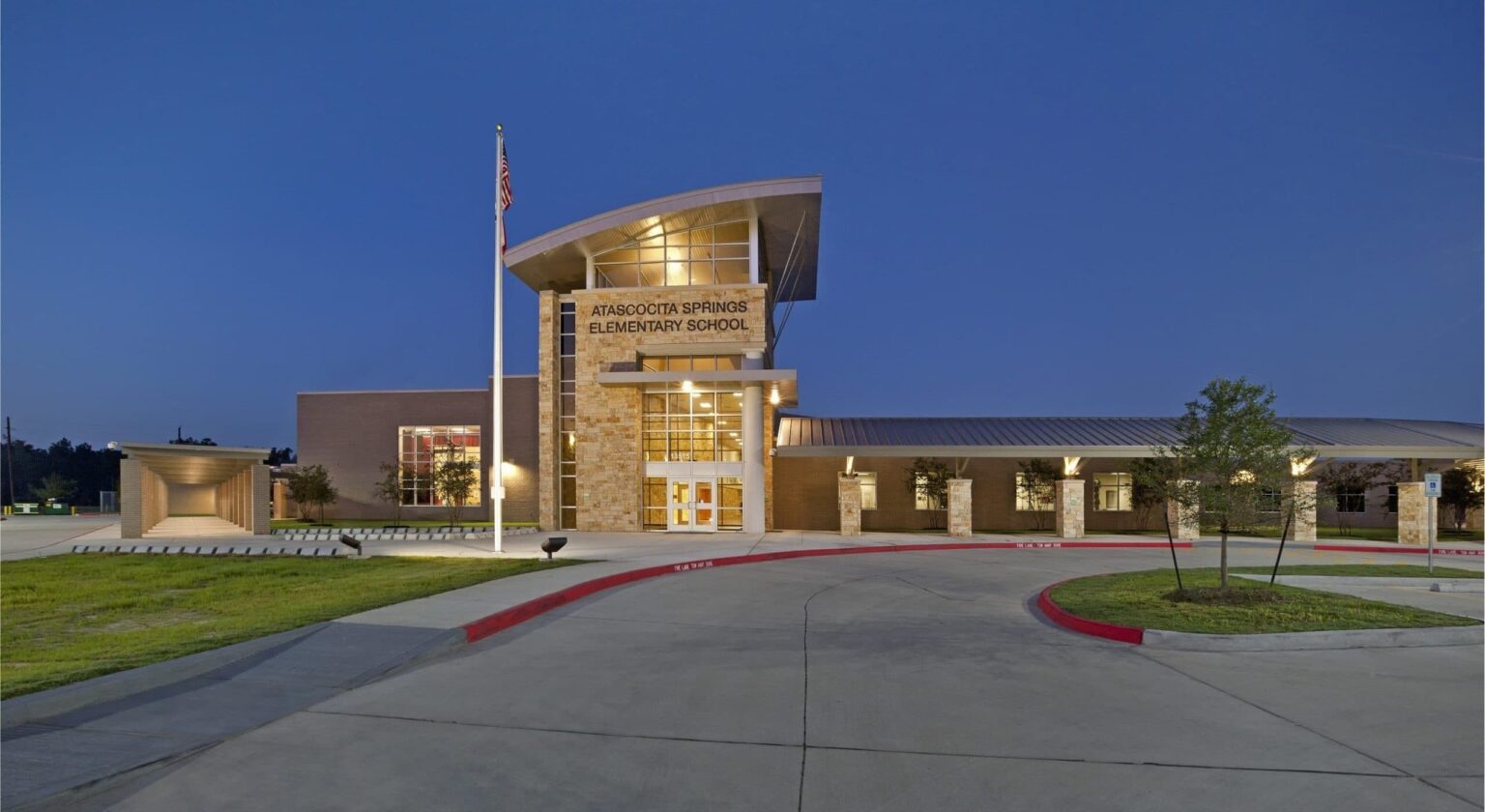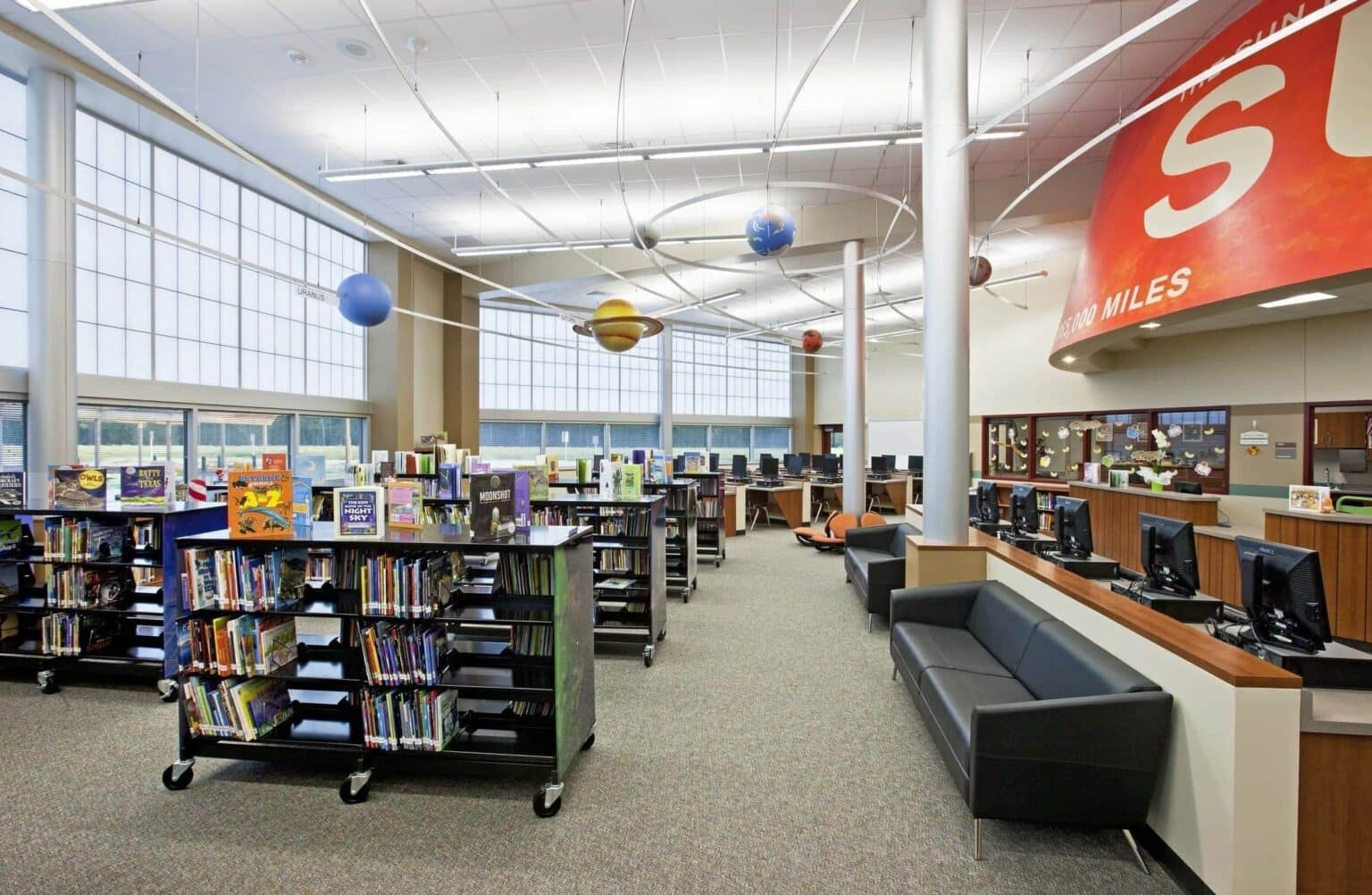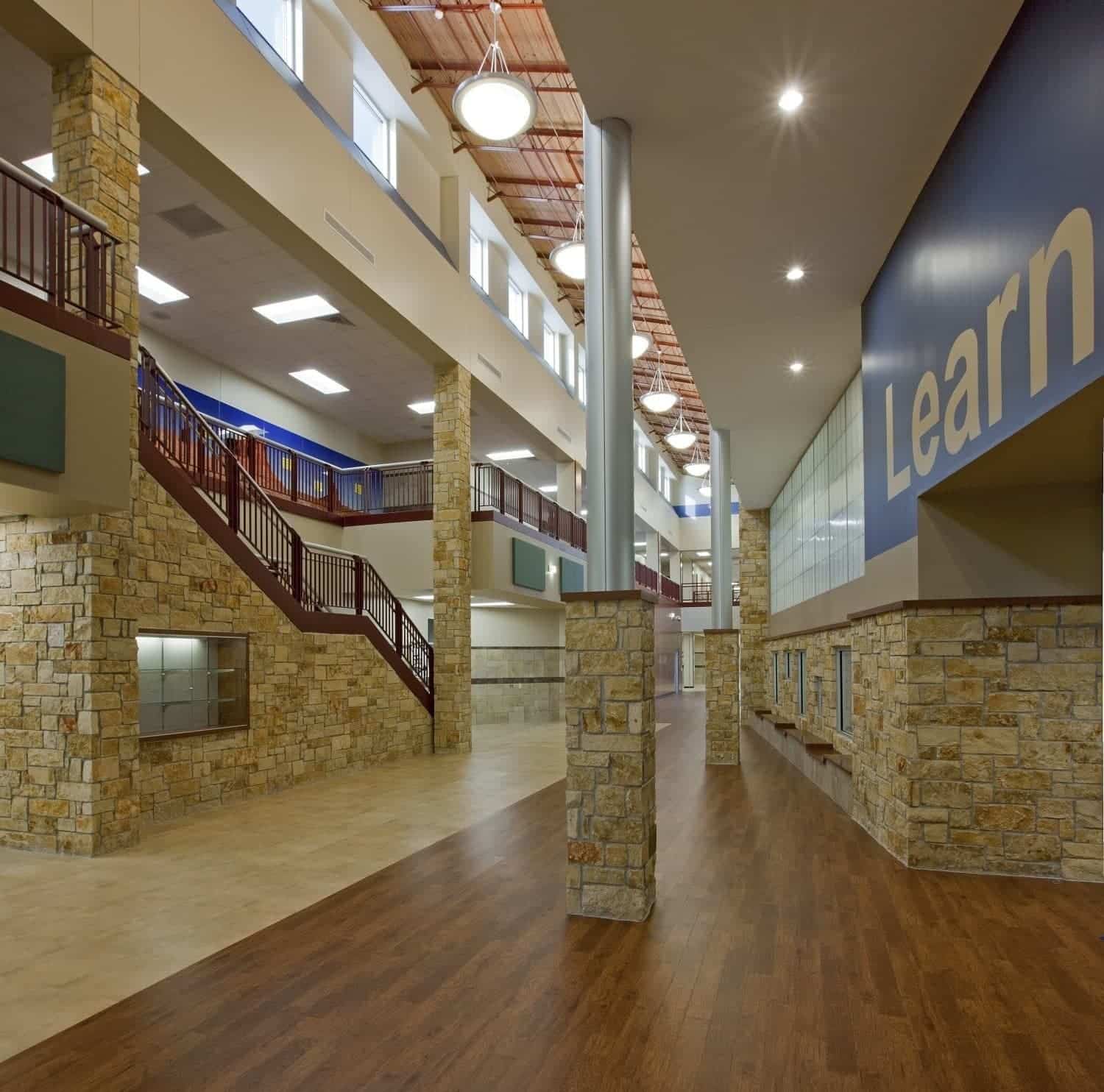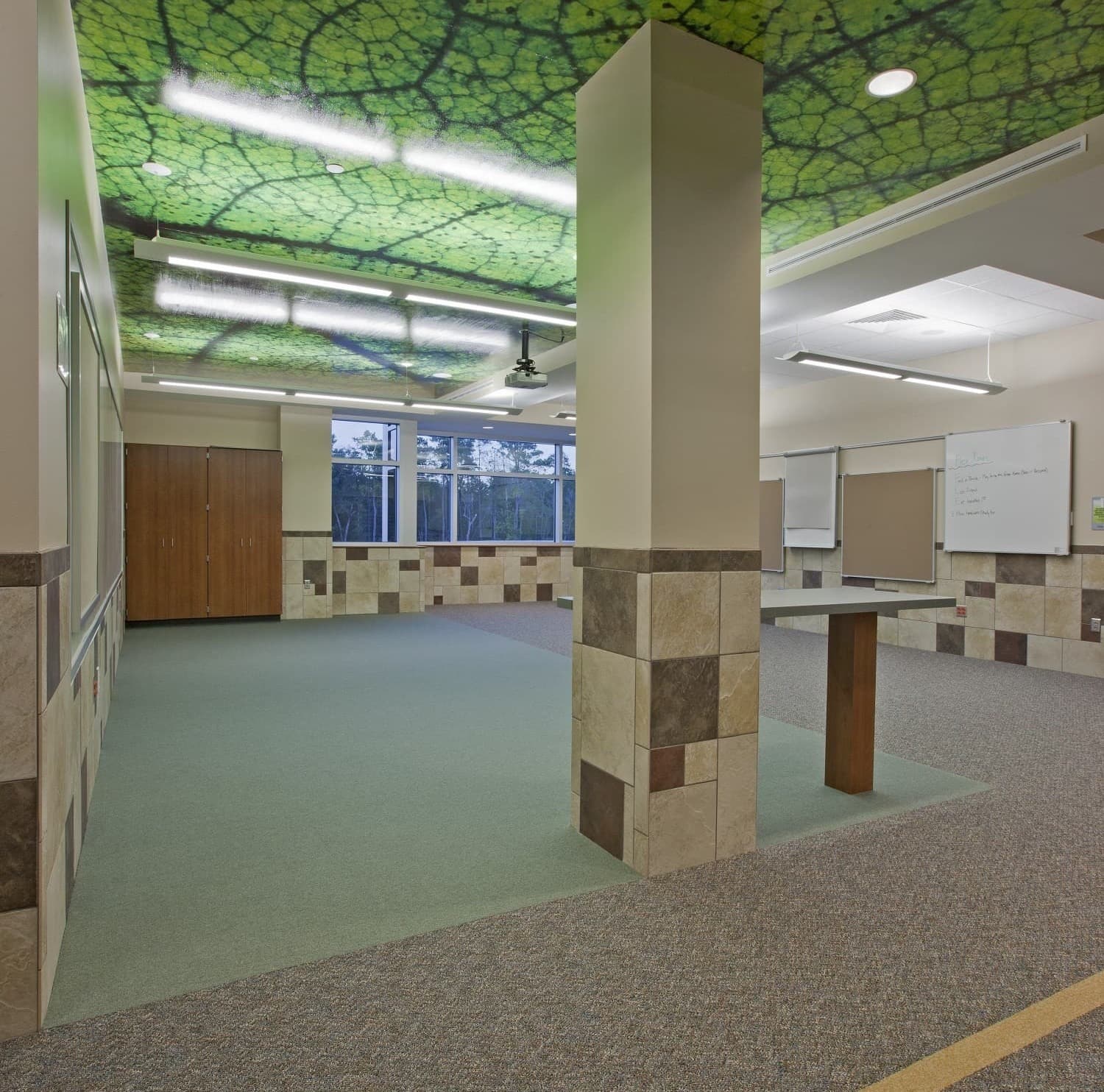Atascocita Spring Elementary School
This elementary school in the Humble ISD was designed to meet LEED Certified standards.
Client: Humble Independent School
Market: K12 Education
Discipline: Architecture + Interiors Civil Engineering
Project Area: 114,461 sq. ft.

This elementary school in the Humble ISD was designed to meet LEED (Leadership in Energy and Environmental Design) Certified standards, as well as TX-CHPS (Collaborative for High Performance Schools) performance standards. The building is designed to exceed energy codes by over 20%. The school is a two-story building, oriented on the site in a true East-West way that utilizes natural lighting, allowing for perpendicular sun exposure in the North-South axis. Energy savings are achieved through the use of high-performance tinted glazing protected by overhangs on the east, south and west facades. Large volume spaces utilize occupancy sensors, parking lot lighting is provided through LED fixtures and renewable energy has been incorporated into the design through the use of solar and wind power.
The school is situated in a quiet residential neighborhood that showcases plenty of bike paths, sidewalks, and bike racks to encourage walking and biking to school. The site plan includes outdoor teaching areas for each classroom wing and an outdoor learning garden. The building is oriented around a main circulation spine that doubles as an active learning street and noise filter between quieter academic areas and louder public spaces.
The school’s main street features interactive learning stations that stream live data from the Building Automation System (BAS) and illustrates statistics about the building’s performance features. An integrated design process was utilized to ensure all sustainability goals for the project were achieved. A LEED-accredited designer attended every project meeting and maintained active involvement throughout each major phase of the project.
To draw inspiration for the design, architects and school officials visited the Children’s Museum of Houston, which features several interactive learning exhibits. The project incorporates multiple interactive kiosks – the main kiosk displays a site map of the school showcasing the many sustainable features. The main display links to other interactive kiosks within the school that stream data from the BAS and certain monitoring devices. The data translates into educational facts about energy consumption, water usage and sustainable features.
Murals for each grade level enlighten students about different kinds of ecosystems, including the grassland eco-system for pre-K, arctic eco-system for kindergarten, ocean eco-system for 1st grade, temperate forest eco-system for 2nd grade, rainforest eco-system for 3rd grade, desert eco-system for 4th grade, and wetlands eco-system for 5th grade. Each of these eco-systems helps influence the recommended curriculum by enhancing students’ understanding of the interdependence of organisms and the environment.
Awards
-
TASA-TASB Award for Architectural Excellence: Sustainability, Innovation, Process of Planning, Design, Value, Educational Appropriateness


